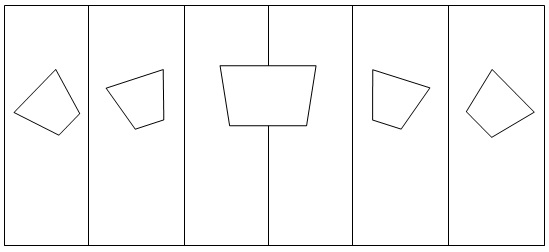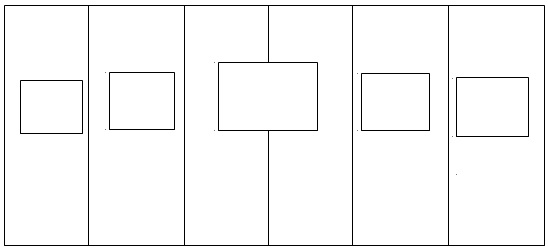The
following essay was originally sketched out back in October of
2003. It is being presented here as a From the Backpack special,
but…
I
haven’t been able to track down any records showing it was posted
on the In
My Backpack web site, but I wouldn’t be surprised to find
out that it was. On a few occasions there have been some changes
and updates made around The ‘ville. Some involved computer issues,
some general redesigns and overhauls. The end result has been
that a few pieces—intentionally and unintentionally—were once
posted and are not today.
The
last notes I can find for dates list the most recent version,
effectively the final draft version, as being saved on October
23, 2003.
I
have gone over the material from that older draft and re-written
a large portion of it for this posting.
~ ~
~ ~ ~

In
August this year, I went on a trip with my family to Australia.
While we were there, my stepsons and I watched some rugby matches,
mainly ones involving the national teams of Australia, New Zealand
and South Africa. This drawing above is a rough representation
of a rugby field.
I
know the markings aren’t perfect, but it is close enough to help
me with the point I want to make. The five boxes, all trapezoids
of some form, reflect advertisements found on the field. It doesn’t
show up in this drawing, but each one is designed as an optical
illusion.
The
primary camera is off to the side and slightly elevated, at the
center of the field. Basically, it is the typical mid-field, or
mid-court, view that American audiences have become accustomed
to over the years. Because of the perspective that camera has
as it scans the field, and the presentation of its images as two-dimensional
on a television set, each of these advertisements looks like a
square on the television screen. And not just that. They don’t
look tilted. They kind of appear like this on the screen…

Australia
and some experiences there has me wondering what comes next for
American professional sports, and the opportunities to best advertise
and increase revenue.
The
National Football League was paying attention to the now defunct
XFL, and don’t let them tell you differently. In some cases, competition
and new ideas are good things. I’m all for them. But that doesn’t
mean that in all areas competition and new ideas are good things.
So
as the NFL starts to put more automated camera units into operation,
bringing about the mask and helmet mounted cameras, or the “skycam”
suspended over the play in the center of the field, I’m all for
supporting the new technology. But it doesn’t mean that latest
and greatest is truly always better.
The
Australian television network was facing, I am guessing, two large
obstacles. First, budget constraints. American broadcasting is
likely working with far more money and options than its international
counterparts. There are likely much lower numbers of cameras broadcasting
an Australian Rules Football or international rugby match than
an NFL game. Second, the need to give its audience as clear and
all-encompassing a view as possible from the cameras it does have.
The end result? As so many of us have watched for years and years
and years… the sideline, mid-field positioning.
Now
here’s where the two concepts really divide…
In
the effort to raise money, advertisements are far more obvious
in Australia. Almost all of the teams have company logos on their
uniform shirts. And, they place advertisements on the field, as
in right on the field. And do the advertisers ever have power
and recognition…
I
was at the airport in Cairns. I had been debating buying a rugby
shirt while in Australia since long before I even left on the
trip. Having seen a few matches of the national team, the Wallabies,
I had all but decided to get one of theirs. While waiting for
my flight, I was walking through some of the stores. I found two
versions of the Wallabies’ team rugby jersey, with a price difference
of about $40. I asked about it, and was told that the sponsor
had changed their logo. Instead of being white lettering, it was
now orange lettering with a white border. Because of that, the
older version with white lettering was obsolete and on sale.
In
the United States this year, I have been frustrated by the differing
views the NFL broadcasters are using during the game. As an audience,
we have essentially been trained to watch the action from the
sideline, at the middle of the field. Start the play with an overhead
shot from behind the defense, or with a field-level shot at an
angle from behind the offense, and it can be very difficult to
adjust before the play starts. Far more often than not it just
feels wrong. Replays focusing in on certain things, from different
angles, work fine. We’ve seen the play, so showing it from different
views makes sense.
And
this isn’t the only way the American networks are disorienting
the audience. To help pay for the increased fees to broadcast
the game, to help promote their regular broadcast schedule, they
are showing increased commercials. The kick off brought to you
by a candy bar, the first pitch sponsored by an insurance company,
or the wireless service special poll of the evening. Just look
behind home plate or at the borders of the statistics presented.
Advertisers. Sponsors. Money, money, money.
And
Australia deals with it better.
They
don’t hide it in either country, but in Australia they paint it
right on the field. Not only are there signs on the outfield fence,
or on the wall that surrounds the field, but there it is with
the players running over it time and time again. And, they take
into account the camera angles and set the design of the ad so
that while sitting at home and watching the game, the ad looks
like it has perfectly squared corners and the perspective is clear.
Neat. They also put sponsors right on the jerseys.
In
American sports, they like to keep company logos off the uniform
jerseys. They don’t belong there we are told. In Australia it
is so accepted as part of the team uniform that, as I said before,
a change in a sponsor’s logo will decrease the value of a shirt
because it’s outdated.
What
they don’t do in Australia is pretend that introducing the players
or presenting a trivia question is entertainment instead of what
it truly is… a chance at advertising revenue. What they don’t
do is disorient you with swirling and changing camera angles.
And I don’t recall missing a single play of any rugby or ARF game
I watched because the broadcast cut away from the game to present
a display for an upcoming show, or a filler of graphics during
a break in play, and then got back to the game late. But that
has happened to me several times each week during the NFL season,
and many times watching other sporting events.
I
guess the simple answer is that as an audience, we have accepted
the fact that advertisers are needed because some one has to pay
for the broadcast we have the privilege of watching. And we also
have grown accustomed to certain views of the field during the
game… sidelines for football and basketball, over the pitcher’s
mound from center field for baseball. But don’t try to fill up
every waking moment with commercials and graphics just because
you can during the breaks in play. Because the timing isn’t always
perfect. And don’t pretend the teams don’t get money from outside
sources. Because the commercials and billboards tell us differently.
We can accept it as a part of the whole. It only looks ignorant
to say it isn’t.
The
important thing is the game. It was refreshing, for the first
time in a long time, to see a presentation that understood that.
And it was striking to see that with the same needs… advertising
revenue… they maintained the importance of the game and said that
a painted field or a logo on a shirt wasn’t such a bad thing so
that the audience could just watch without something having to
happen every 15 seconds thanks to a sponsor.